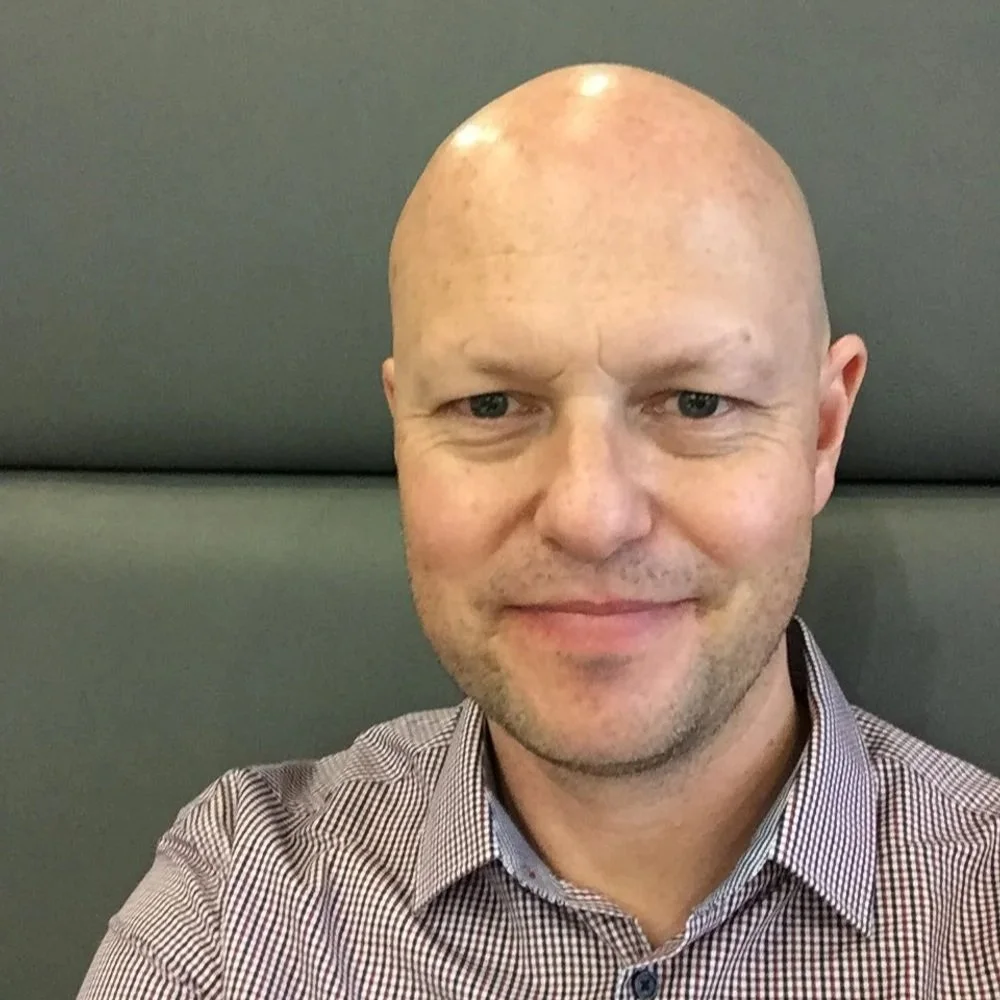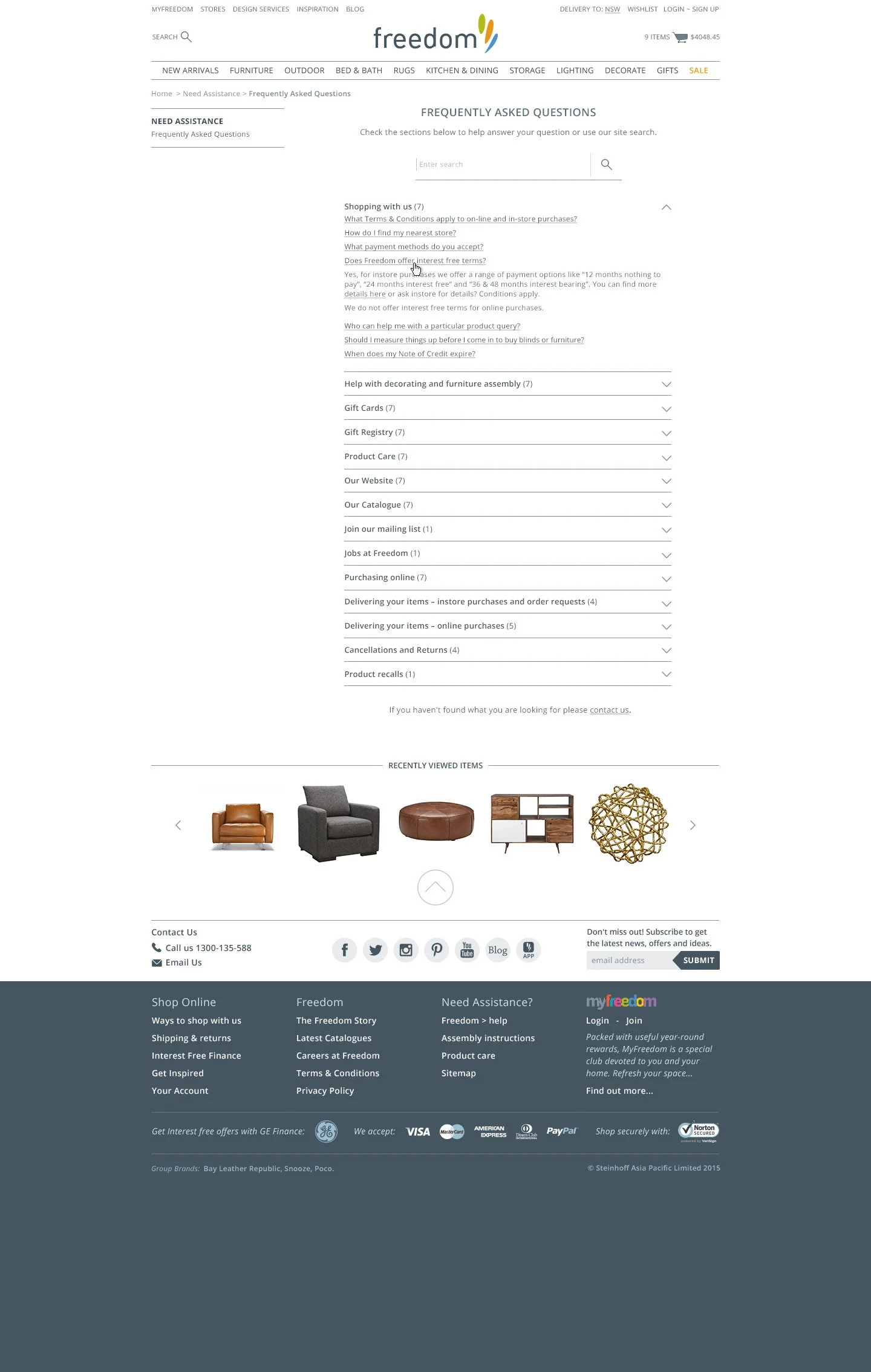Freedom Furniture Website for Triquestra
Freedom Furniture Australia website - unified commerce for a frictionless CX.
Freedom Furniture Australia needed a huge update to their big box retail online offering.
The major change going omnichannel / unified commerce with a direct instant connection to the big box stores.
Me at the airport on a trip to Aus.
First up let me explain the setup. Freedom is using Triquestra’s Infinity retail system that fuses POS, Back-Office, Loyalty and Inventory. The omnichannel solution means that the different touchpoints of the retail business are connected - showing data in real-time. The website build was based around having the website reflect the stock information, pricing, promotions and ordering system all match up to the point of sale and back-office systems.
Triquestra has been my client since 2008, and for the 3 years before my sabbatical trip, did a brand refresh and CMS website build for them. At that stage there were two distinct websites for Triquestra and Infinity. After my sabbatical, I came back and Triquestra started building their ‘Cloud’ mobile product, Infinity Cloud. Apps were pretty new, with Apple’s app store opening mid-2008. I worked on-site with developers to build the Infinity Cloud app, and promotional website. At this stage I have been heavily involved in projects, I am part of the team, understand Infinity well - and have been chosen to lead the design, as part of the team on some brand-new website builds fusing Infinity into the solution. One of these projects is this one, a new website for Freedom Furniture Australia. This is why on my client list Freedom is indented under Triquestra.
Development structure
Being a large project there were a lot of integrations and stakeholder requirements. There were extensive scenarios that needed to be designed end to end.
Briefing
Briefing was three-fold. Firstly, the project brief came into Triquestra and formed the product brief for the team. Secondly, Freedom supplied a detailed brief on their requirements. Lastly, reverse briefing was supplied that took the two previous briefs and put a user experience and design lens on the project.
Wireframing
Pages for desktop and mobile were wireframed. The scale of the project grew exponentially, as for example, the home page alone was a 16 page wireframe document with rationale, altered user states and went through 35 iterative versions. The entire website was wireframed to be signed off by the board, for both desktop and mobile views.
Design
Designs were created in Photoshop. The designs translated the functionality and user experience work into the brand voice of Freedom. The user interface elements were designed, and the pages designed. At this stage, due to the scale of the project, I had bought in two of my ex-colleagues to help, Phil Bannister and Tracey Hemingway.
Prototyping
It’s obvious we need to demo this like a live website somehow. I come across a prototyping tool called Invision. This becomes the workflow, briefs come in wireframing in Indesign, designing in Photoshop, prototype with Invision. We have designed interactive prototypes showing navigation and product interactions :)
User experience bombshell
There were inklings of baby octopus tentacles of doubt creeping in already. Key user experience learnings were evolving dramatically. In the early days there was a very ‘hands off’ best practice methodology to user experience. By ‘hands off’ I mean users were quite new in their own experiences - so there was no pressure to conform to their needs just yet. Users trusted us to do what was best, and we used design, and as interfaces became more accessible those design principles formed best practices. I have written a blog post that was first featured on the Infinity RMS website about this at about the time this was happening. So here it is for interests sake.
Shift in thinking
After the penny dropped - things needed to change. Instead of what’s right - it became how can we meet the needs, all the needs. This is a really interesting concept to consider. It’s why Triquestra is so successful with their retail software - they listen. This is the platform that got the project to this point, and everything in the backend through the developers was meeting the omnichannel solution. Where the shift in thinking came about is the way people browse, use, experience the solution. Here’s where the penny stopped it’s accelerating rotations to a final stop. Choice.








































